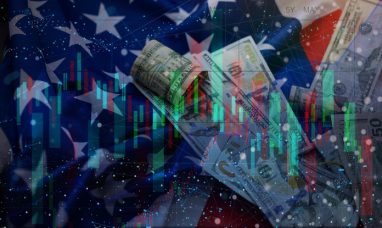Wall Street celebrated the latest inflation report, which showed that prices rose less than expected from April to May, causing stocks to jump by 1%.
Consumers also have reason to cheer. Although one month’s economic data won’t immediately ease household budgets, a crucial trend is moving in the right direction: inflation in goods is finally stabilizing.
Inflation surged three years ago as vaccines ended the COVID pandemic, consumers began to spend again, and stimulus money fueled demand. This coincided with Joe Biden’s presidential term, leading some to blame him for reduced spending power. However, COVID-related factors were primarily responsible for driving up goods prices.
The pandemic shifted spending from services to goods, with supply chain issues causing scarcity and driving prices up. In March 2022, the one-year inflation rate for goods peaked at 14.2%.
Now, the annual inflation rate for goods is just 0.1%. What truly matters to consumers is how much their paycheck can buy. Over the past three years, the cost of all goods combined has risen by 14%, while earnings have increased by 14.9%, meaning goods are no longer consuming an oversized portion of paychecks.
Some prices remain elevated, particularly food and energy, which have risen more than earnings over the past three years. However, other items like clothing, furniture, and appliances have increased less than earnings, with prices for electronics and toys actually declining.
Commodity prices are expected to continue moderating, with gasoline prices dropping to around $3.45 per gallon. Retailers like Target (NYSE:TGT), Walgreens (NASDAQ:WBA), Ikea, Walmart (NYSE:WMT), McDonald’s (NYSE:MCD), Burger King, and KFC have recently announced price cuts. As the job market softens, demand is likely to cool further, stabilizing goods inflation.
Overall inflation is now at 3.3%, down from the 9% peak in June 2022, but still above the Federal Reserve’s 2% target. Services inflation remains high at 5.2%, with the cost of all services combined rising 18.3% over the past three years, slightly outpacing income growth.
Rent is a significant factor, with rental inflation at 5.3% year-over-year and rents up 20.4% over the past three years, 5.5 percentage points more than earnings. Restaurant prices have increased by 21%, and auto insurance costs have surged by 47.1% since 2021.
Despite these challenges, the trend in services is also improving. The Apartment List rental index shows a modest decline in rents from peak 2022 levels, suggesting renters may have more leverage to negotiate cheaper leases.
While the numbers show improvement, lasting consumer confidence may take time to recover. As economists and politicians have noted, everyone experiences inflation differently, and rising prices can cause lasting consumer concern.
Featured Image: Freepik









